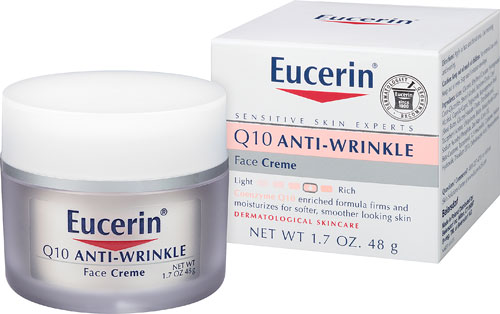Crepey skin is skin that appears thin and wrinkled, bearing a resemblance to crepe paper. It also exhibits a loss of elasticity; when stretched, it does not return to its normal state as quickly or fully as it once would have.
The thin, loose skin also tends to develop brown “age” or “liver” spots and red broken capillaries. It most commonly occurs in areas of frequent sun exposure (e.g., under the eyes), but shaded parts of the body, such as the insides of the upper arms, may also adopt a crepey appearance.
What causes crepey skin?
Crepey skin is more common with age, generally appearing in one’s 40s. However, the skin condition is not necessarily caused by aging. In fact, most crepey skin results from photodamage, long-term exposure to ultraviolet (UV) radiation from the sun and/or tanning beds. Over time, UV radiation breaks down collagen and elastin, which help prevent skin from thinning, stretching and wrinkling. Individuals with fair skin are especially susceptible to skin damage from UV radiation, including crepey skin.
Other common causes of crepey skin include:
- Genetics
- Smoking
- Pollution
- Dryness (dehydration) of skin
- Substantial weight loss or gain
- Inadequate sleep
- Improper nutrition
- Certain medications (e.g., prednisone)
How to prevent crepey skin
Fortunately, there are many steps you can take to help prevent crepey skin, including:
- Using gentle cleansers and soaps. These tend to be less drying. Look for products labeled for sensitive skin.
. - Moisturizing skin daily. For deeper penetration, choose a lotion that contains ceramide.
- Exfoliating skin weekly. Use a loofah to help shed those dead skin cells.
- Protecting skin from sun. Wear protective clothing and a broad-brimmed hat and apply sunscreen with an SPF of 30+ in northern regions and 50+ in tropical climates, mountains and water.
- Avoiding tanning beds. Get your glow on with a sunless tanner
- Maintaining a healthy diet. Be sure to include antioxidant-rich foods (e.g., berries, nuts, leafy greens and whole grains) and foods containing omega-3 fatty acids (e.g., eggs, fish, flax seed, spinach and soybeans).
Treatment*
Crepey skin starting to make an unwanted appearance? Not to worry! There are many things you can do to treat loose, flaccid skin.
For starters, consider one or more of the following home remedies:
- Reducing stress (e.g., meditation)
- Exercising regularly
- Massaging areas of thinning (e.g., arms, face and neck)
- Exfoliating skin with homemade scrub (try using equal parts sugar and olive oil!)
Other treatments for crepey skin differ based on the cause, location and severity, but may include vitamins (C and E contain antioxidants that combat cellular damage) and over-the-counter products containing retinol, glycerin or hyaluronic acid. Moisturizing oils, such as cocoa butter, coconut oil and olive oil can also help repair crepey skin.
A dermatologist may recommend a prescription medication, such as Tretinoin, a topical cream that can be applied directly to the affected area. Other dermatological treatments for crepey skin include face peels, use of an ultrasound or radiofrequency device, laser treatment, fillers and skin removal surgery.
*Consult your dermatologist before beginning any treatment regimen.




